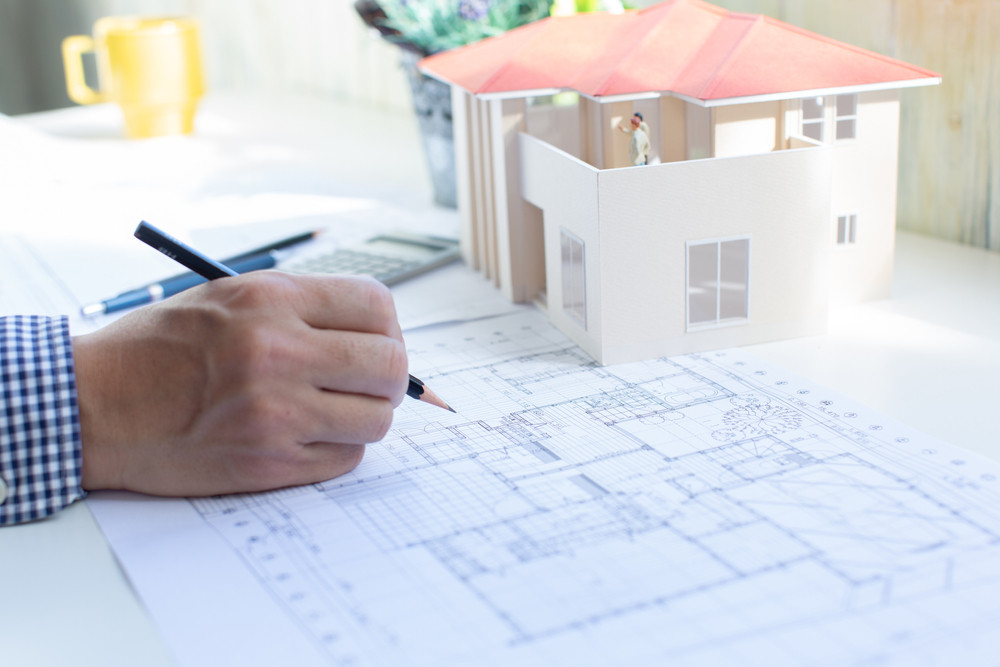Check Out Acclaimed Jobs by Distinguished CDA Architects
Check Out Acclaimed Jobs by Distinguished CDA Architects
Blog Article
Checking Out the Diverse Responsibilities and Ability Sets Required for an Effective Occupation in Design
Designers are charged not just with the aesthetic elements of style yet also with the intricate subtleties of project management, efficient interaction, and cooperation across different disciplines. What lies at the intersection of these varied competencies, and just how do they shape an architect's journey toward success?
Trick Responsibilities of Architects
Architects bear a multitude of duties that are essential to the effective conclusion of a task (cda architects). Central to their function is the development of extensive layout concepts that align with the customer's vision while adhering to regulative standards. Designers participate in substantial examinations with clients, collecting essential info regarding their needs, choices, and budget constraints, which educates the layout procedure
Along with conceptualization, designers are entrusted with creating comprehensive drawings and specifications that offer as plans for building and construction. They should ensure that these records are not just cosmetically pleasing however also useful and lasting. Collaborating with designers, contractors, and other experts is another crucial responsibility, as designers coordinate numerous aspects of a task to ensure coherence and performance.
Additionally, engineers must stay vigilant concerning job timelines and budget plans, frequently performing assessments to identify prospective risks and delays. They are additionally in charge of acquiring required permits and making certain compliance with neighborhood building regulations. Designers play a vital role in looking after building and construction, performing website visits, and resolving any issues that arise, making certain that the last item satisfies the recognized layout and high quality criteria.
Vital Technical Skills
A durable foundation in crucial technical abilities is critical for engineers to effectively navigate the complexities of the layout and building procedures (cda architects). Efficiency in computer-aided design (CAD) software is fundamental, as it permits engineers to develop accurate and detailed building illustrations. Knowledge with Structure Info Modeling (BIM) is equally crucial, enabling engineers to picture and mimic the building and construction process, take care of job data, and team up efficiently with various other stakeholders
Furthermore, a solid understanding of structural, mechanical, and electric systems ensures that designers can design structures that are not just visually pleasing but likewise useful and risk-free. Knowledge of building methods and materials is vital to make educated decisions that line up with project budget plans and timelines.
In addition, designers should possess abilities in project administration, including organizing, budgeting, and resource allotment, to make certain that projects are finished successfully. An understanding of neighborhood building ordinance and regulations is also essential, as it makes sure compliance and assists prevent lawful problems.

Innovative Problem Solving
Imaginative issue addressing is an essential competency for designers, allowing additional reading them to attend to special difficulties that arise throughout the design and building and construction stages. Architects regularly run into complicated problems, such as site restraints, zoning guidelines, and client requirements, which demand ingenious and efficient remedies. The capability to think seriously and artistically is necessary in producing concepts that are both practical and aesthetically pleasing.
Reliable innovative problem addressing includes a systematic strategy, starting with complete evaluation and identification of the problem. Designers must examine multiple viewpoints, considering variables such as sustainability, expense, and area impact. This procedure frequently consists of brainstorming sessions, where varied concepts are urged and explored.
Cooperation plays a substantial role in this expertise. Involving with multidisciplinary teams permits architects to take advantage of differed expertise, fostering an environment where distinct remedies can emerge. Engineers have to remain adaptable, as difficulties usually evolve throughout a job's lifecycle.
Eventually, effective imaginative problem resolving not just settles immediate problems however additionally boosts the overall stability and vision of the building style. By welcoming this ability, engineers can develop rooms that resonate with individuals while resolving the complex needs of their career.
Task Management Techniques
Effective job administration methods are necessary for ensuring the successful execution of building undertakings (cda architects). These techniques encompass a series of methods focused on maximizing sources, taking care of time, and regulating expenses. One basic strategy is the usage of the Task Management Institute's (PMI) framework, that includes defining job range, establishing clear goals, and establishing a comprehensive timeline
Furthermore, embracing Agile approaches can boost flexibility and responsiveness throughout the task lifecycle, allowing architects to adapt to changing client needs or unexpected challenges. Making use of tools such as Gantt charts and job management software program likewise helps with monitoring progression and keeping accountability among employee.
Danger monitoring is another essential element, calling for engineers to identify possible obstacles at an early stage and establish mitigation methods. Regular progression assessments and stakeholder consultations make sure that projects continue to be aligned with preliminary goals and expectations.
Moreover, the application of Lean principles advertises efficiency by decreasing waste and improving procedures. Ultimately, understanding these job monitoring methods not just enhances the high quality of building jobs yet also adds to the sustainability and earnings of architectural firms. This thorough method is essential for navigating the complexities integral in the field of design.
Relevance of Communication Abilities
Communication skills are important to the success of any designer, as they facilitate partnership amongst varied stakeholders, consisting of clients, specialists, and staff member. Effective communication guarantees that the vision of a task is plainly articulated and understood by all parties entailed. additional reading This quality is crucial to straightening expectations and minimizing misconceptions that might occur during the layout see this website and building procedures.
Architects should possess both verbal and written communication skills, as they on a regular basis existing styles, draft proposals, and work out contracts. The capability to listen proactively is just as crucial; designers must understand the demands and preferences of clients to develop areas that reflect their vision while adhering to sensible restrictions.

Eventually, solid interaction skills not only add to the smooth implementation of architectural projects however also assist develop lasting connections with customers and collaborators, which is essential for expert growth and credibility in the affordable field of design.
Conclusion
Architects must stabilize creative vision with technical effectiveness, efficient project monitoring, and strong interaction capabilities. The interplay of these expertises assists in the development of cutting-edge and sustainable architectural options, guaranteeing that projects not just meet customer expectations yet also stick to industry criteria.
Report this page